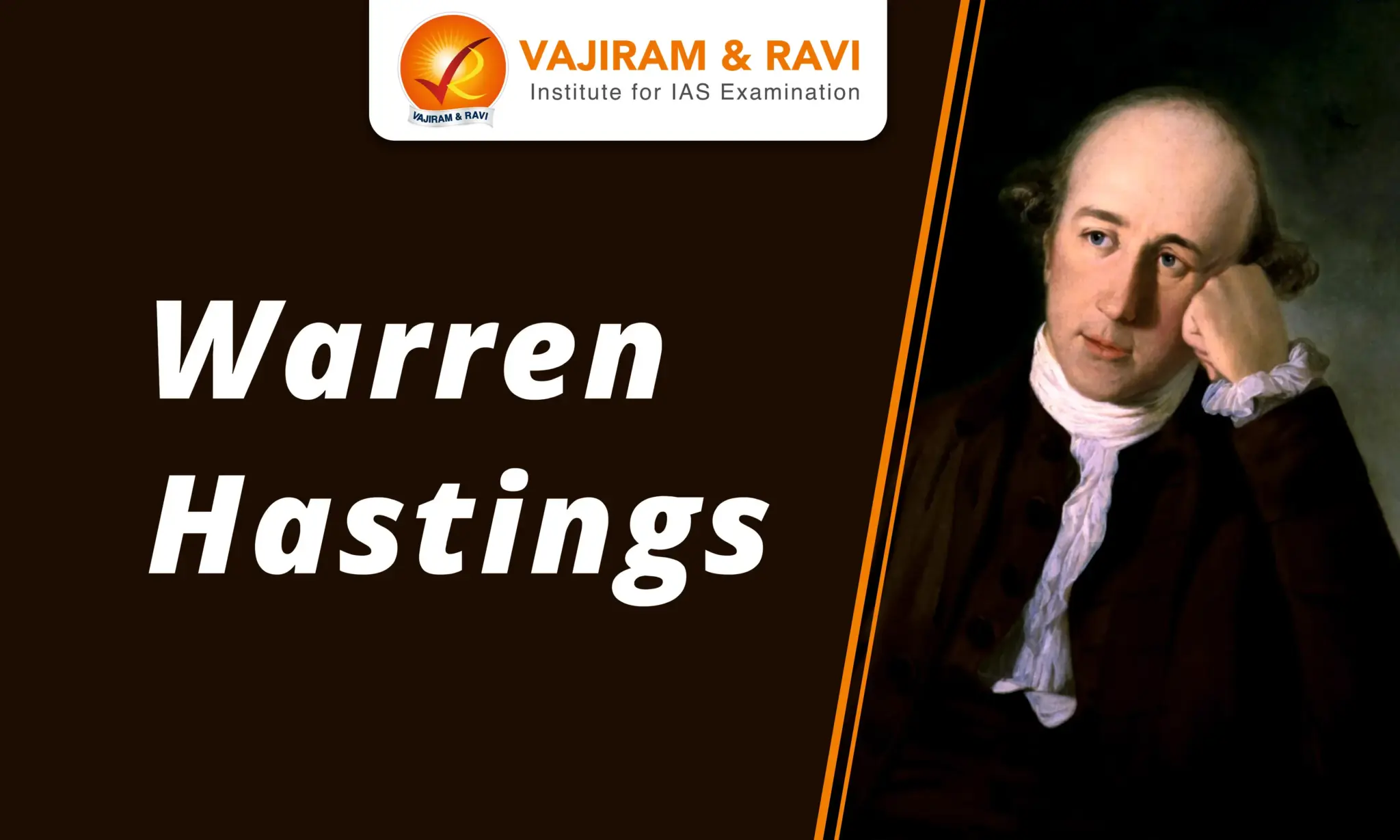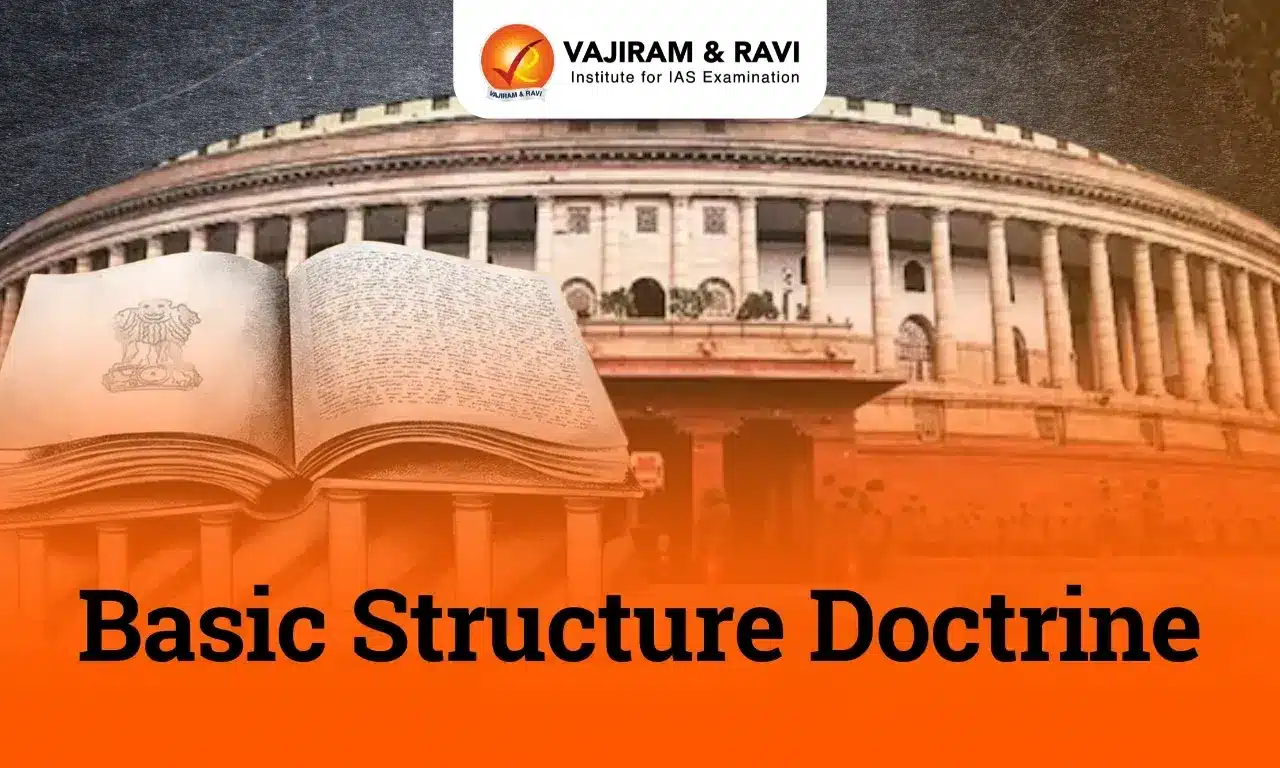Warren Hastings, a key figure in British India’s colonial history, was the first Governor-General of Bengal from 1773 to 1785. He implemented significant administrative, judicial, and economic reforms that laid the groundwork for British governance in India.
Despite his significant contributions to the East India Company, Hasting’s career ended in conflict, culminating in a historic impeachment trial.
Warren Hastings
Warren Hastings was born on December 6, 1732, in Churchill, Oxfordshire. He joined the British East India Company at a young age and rose quickly through the ranks due to his strong administrative skills and understanding of Indian culture and politics. In 1773, he was appointed the first Governor-General of Bengal, effectively putting him in charge of British India.
- Hasting’s tenure was distinguished by his efforts to consolidate British power, streamline administration, and establish a stable government system.
- However, his career was marred by scandals and political rivalries, which led to his impeachment after he returned to England.
Warren Hastings Reforms
Warren Hastings (1773 to 1785) implemented several comprehensive reforms to improve British governance in India. His reforms impacted administrative, judicial, and trade areas, significantly altering the British East India Company’s control over Indian territories.
Administrative Reforms
To improve administrative efficiency, Warren Hastings abolished the Dual System of government, centralizing both revenue and administrative powers under British control, and established the Board of Revenue in Calcutta to enhance administrative efficiency and streamline district management.
- Abolition of the Dual System: In 1772, Warren Hastings abolished the Dual System of government instituted by Robert Clivein 1765, where tax collection (Diwani) was under British control, enhancing British influence and efficiency.
- Creation of the Board of Revenue: To centralise revenue management, a Board of Revenue was founded in Calcutta in 1772.
- Shift of Capital to Calcutta: The capital of Bengal was moved from Murshidabad to Calcutta, enhancing administrative efficiency.
- The Policy of the Ring Fence (1765-1813): It was introduced by Hastings, and created buffer zones to protect British territories from Maratha and Afghan threats. It, along with Wellesley’s subsidiary alliance in the late 1800s, reinforced British dominance.
Judicial Reforms
Warren Hastings reformed the judicial system by abolishing Zamindari judicial powers and establishing various courts, including District Diwani and Fauzdari Adalats, the Sadar Diwani Adalat, the Sadar Nizamat Adalat, and the Supreme Court at Calcutta, to centralise and streamline legal authority.
- Abolition of Zamindari Judicial Powers: Warren Hastings abolished the judicial powers of Zamindars, consolidating authority under British-appointed judges and reducing the influence of local landowners.
- District Diwani Adalats: It was established in 1772 to handle civil disputes, these courts were overseen by district collectors and followed Hindu law for Hindus and Muslim law for Muslims. Appeals were directed to the Sadar Diwani Adalat in Calcutta.
- District Fauzdari Adalats: Established in 1772, these courts managed criminal cases with Indian officers and qazis. They followed Muslim law and required approval from the Sadar Nizamat Adalat in Murshidabad for capital punishments and property seizures.
- Sadar Diwani Adalat (1772): Located in Calcutta, this civil appellate court was led by a president and two Supreme Council members, serving as the highest appeal court for civil cases.
- Sadar Nizamat Adalat (1772): This criminal appellate court in Murshidabad was presided over by a deputy nizam, assisted by a chief qazi and chief mufti, overseeing final decisions in criminal cases from the District Fauzdari Adalats.
- Supreme Court at Calcutta (1774): It was established by the Regulating Act of 1773, this court had jurisdiction over all British subjects in Calcutta and its factories, exercising both original and appellate jurisdiction, which often led to conflicts with other courts.
Trade and Regulatory Reforms
Warren Hastings reformed trade by abolishing dastaks, restricting private trade, and imposing a 2.5% uniform tariff to ensure fairness and reduce corruption.
- Abolition of Dastaks: In 1775, Hastings abolished the dastak (free trade passes) system, which had been widely abused by company officials and traders to avoid taxes and duties, undermining local economies and British revenue.
- Restrictions on Private Trade: Hastings imposed restrictions on private trading by company officials to prevent conflicts of interest and corruption in 1775. This measure was intended to create a more equitable trading environment and prevent exploitation.
- Uniform Tariff Implementation: To promote trade fairness, Hastings imposed a 2.5% standardised tariff on both Indian and foreign goods in 1775. This policy reduced discrimination against Indian traders while ensuring a more balanced trading system.
Warren Hastings Significant Events
Warren Hastings is known for his efforts to consolidate British control over Indian territories, implementing various reforms in governance, finance, and legal systems. He was also involved in significant conflicts with Indian rulers, most notably during the Anglo-Mysore Wars against Tipu Sultan and in his dealings with the Marathas.
- Regulating Act of 1773:The Regulating Act of 1773 established the Governor-General of Bengal and the Supreme Court in Calcutta to centralise and improve administration, but this resulted in jurisdictional disputes between the Supreme Court and local courts.
- Act of 1781: The Act of 1781 defined the roles and powers of the Governor-General’s Council and the Supreme Court, resolving jurisdictional disputes and streamlining government.
- Pitt’s India Act: Pitt’s India Act of 1784 established a Board of Control to oversee the administration of the East India Company, increasing British parliamentary oversight while reducing corruption and mismanagement.
- Foundation of Calcutta Madrasah: Warren Hastings founded the Calcutta Madrasah in 1781 to promote the study of Muslim law and other related subjects.
- Foundation of the Asiatic Society of Bengal: The Asiatic Society of Bengal was founded in 1784 by Hastings and Sir William Jones to promote research in Asian languages, history, and cultures, making significant contributions to the study of Indian and Asian civilisations.
- Strained Relations with Chait Singh: Hastings’ revenue demands and administrative control issues with Chait Singh, the Maharaja of Benaras, resulted in a major conflict.
Warren Hastings Significant Military Conflicts
Warren Hastings’ reign was marked by significant conflicts: the 1774 Rohilla War, which annexed Rohilkhand to Oudh but drew criticism; the First Anglo-Maratha War, which ended with the Treaty of Salbai; and the Second Anglo-Mysore War, which ended with the Treaty of Mangalore after significant British defeat.
- Rohilla War (1774): Warren Hastings helped the Nawab of Oudh defeat the Rohillas, annexing their territory to Oudh and strengthening the British-Oudh alliance, though the war’s brutality led to criticism of Hastings.
- First Anglo-Maratha War (1775–1782): The British and Marathas fought for control of western India. The war began with the Treaty of Surat and ended with the Treaty of Salbai, maintaining the status quo and securing British control of Salsette.
- Second Anglo-Mysore War (1780-1784): The British fought Tipu Sultan due to Hyder Ali’s alliances. After early defeats, Hastings led a response, resulting in the Treaty of Mangalore, restoring pre-war borders.
Warren Hastings Impeachment
Warren Hastings faced a major impeachment trial upon his return to England in 1785, accusing him of corruption, mismanagement, and abuse of power during his tenure as Governor-General of Bengal. He was charged with corruption in his dealings with Indian rulers, mismanagement of the East India Company, and cruelty to Indian subjects, particularly during the Rohilla War.
Warren Hastings UPSC PYQs
Question 1: With reference to educational institutions during colonial rule in India, consider the following pairs : (UPSC Prelims 2018)
Institution Founder
- Sanskrit College at Benaras -William Jones
- Calcutta Madarsa -Warren Hastings
- Fort William College -Arthur Wellesley
Which of the pairs given above is/are correct?
- a) 1 and 2 only
- b) 2 only
- c) 1 and 3 only
- d) 3 only
Answer: (b)
Last updated on April, 2025
→ UPSC Notification 2025 was released on 22nd January 2025.
→ The UPSC Vacancy 2025 were released 1129, out of which 979 were for UPSC CSE and remaining 150 are for UPSC IFoS.
→ UPSC Admit Card 2025 is expected to release in first week of May for CSE Prelims Exam 2025.
→ The UPSC Prelims 2025 is scheduled to be conducted on 25th May 2025 and UPSC Mains 2025 will be conducted on 22nd August 2025.
→ Apply once through it and aspirants can apply for various government exams conducted by UPSC.
→ The UPSC Selection Process is of 3 stages-Prelims, Mains and Interview.
→ UPSC Result 2024 is released with latest UPSC Marksheet 2024. Check Now!
→ UPSC Toppers List 2024 is released now. Shakti Dubey is UPSC AIR 1 2024 Topper.
→ Also check Best IAS Coaching in Delhi
Warren Hastings FAQs
Q1. Who becomes the first governor-general of Bengal?+
Q2. When did Warren Hastings leave India?+
Q3. What was Warren Hastings' role in the Rohilla War?+
Q4. What was the five-year settlement of Warren Hastings?+
Tags: quest warren hastings
















